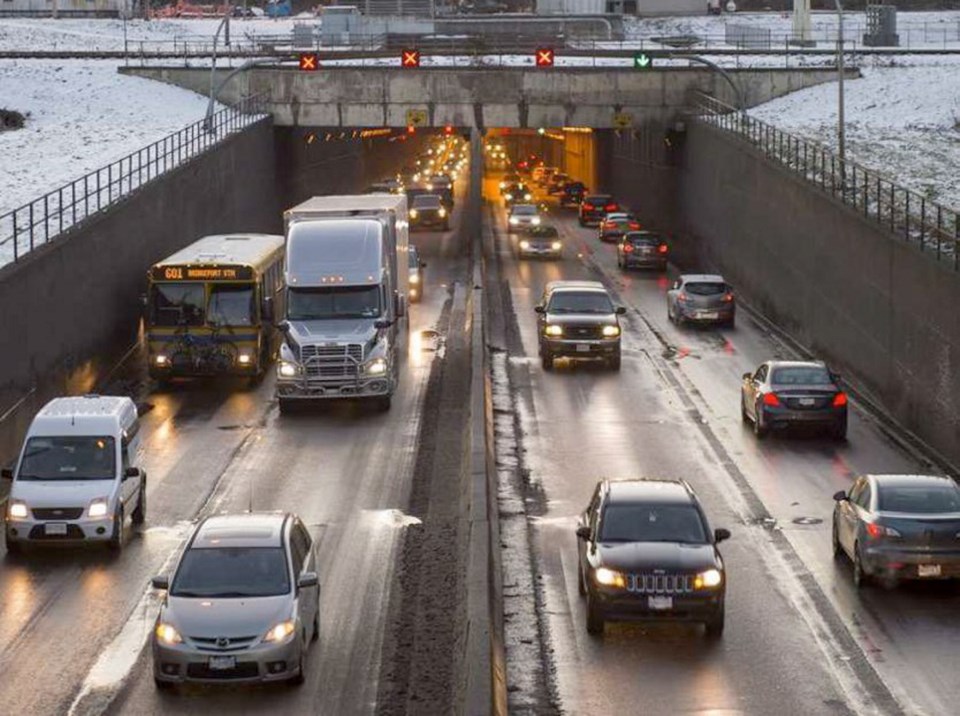It took an 87-year-old retired engineer to figure out how to make the strange new online hybrid legislative session work. It has been two disconcerting weeks of mostly playing pattycake so far. A skeleton crew of cabinet ministers and Opposition critics sit by themselves and the rest appear on monitors. They’re getting the job done, but the spark is missing.
Sitting two sword lengths apart is one thing. Sitting hundreds of kilometres away and arguing with a grainy headshot on the wall is another. Question period is like yelling at your TV.
Cue Liberal MLA Ralph Sultan, (West Vancouver-Capilano). He’s the courtly grandfather (make that great-grandfather) of the house. But every so often he likes to rain hellfire down on the NDP, just to stay limber.
Sitting in a home office with a headset and waving a sheet of paper around, he unleashed an interrogative indictment this week of the NDP’s decision to cancel the big bridge project former premier Christy Clark started to replace the Massey Tunnel under the Fraser River.
He took it personally. Understandable, given his background. Engineers react to cancelling major projects like kids would if you smashed their phones against a rock.
Instead of the usual halting questions and long pauses before non-answers are formulated and delivered, he unloaded all his thoughts all at once.
“I wish to ask the minister nine questions arising from the government’s decision to cancel the 10-lane bridge across the Fraser River to replace the existing four-lane George Massey Tunnel built in 1956,” he began. (Sultan got his engineering degree at age 23, the year it opened.)
“I will simply read them into the record and await a written response at the minister’s pleasure, if that’s okay with you.” That precluded all the stops and starts and bought him room for some momentum.
He said a new bridge was announced in September, 2012 and finalized for bids in 2016.
The estimate was $3.5 billion but a bid came in almost $1 billion lower and work began.
Then, the NDP took over, cancelled “Christy Clark’s vanity project,” and decided they’d start over.
“So B.C. taxpayers took a $100 million hit (on work to that date) and got nothing in return. ... Are these figures more or less accurate? You never know in this business.”
He recalled that Transportation and Infrastructure Minister Claire Trevena then hired a consultant to review the 10-lane bridge project.
Why was he hired after the cancellation, rather than before it? “Isn’t that, in a rather peculiar fashion, putting the cart before the horse?”
Sultan surmised that the review was ordered to provide a (retroactive) cover story for the cancellation.
“Does the minister agree?”
The consultant (Stan Cowdell) suggested the bridge was somewhat over-built. But Sultan said that just meant it would ease congestion for a longer period, out to 2045.
“Does the minister view that as negative or a positive?”
After digesting Cowdell’s huge report, Trevena hired yet another consulting engineer firm. It reported six months ago and Sultan summarized the options:
• a deep-bore tunnel — $12 to $17 billion
• an immersed tunnel like the old one, only bigger — $4 billion to $5 billion
• an eight-lane bridge instead of 10, with no apparent capability for eventual rapid transit — $3.5 billion to $4.5 billion.
“Is there a smidgen of regret?” Sultan wondered. “Does the minister feel any remorse?
“Or should we conclude that capital costs are really not part of this government’s mindset when it comes to public infrastructure decision-making?
“I really look forward to your answers.”
No regret and no remorse, said Trevena’s response. She’ll give longer answers in writing, but said she took “a very rational approach that the previous project was too big for the region” and that the Liberals “didn’t do due diligence” on options.
She said she’ll settle on a new plan later this year.
In the meantime, $40 million has been budgeted for safety improvements to the old tunnel, which is somehow labelled under the heading of replacing it.
If the NDP had left it alone, the bridge would be about two years away from completion by now. Instead, they’re looking at more expensive options, another lengthy round of consultations and a ribbon-cutting probably seven years away, if it happens at all.



